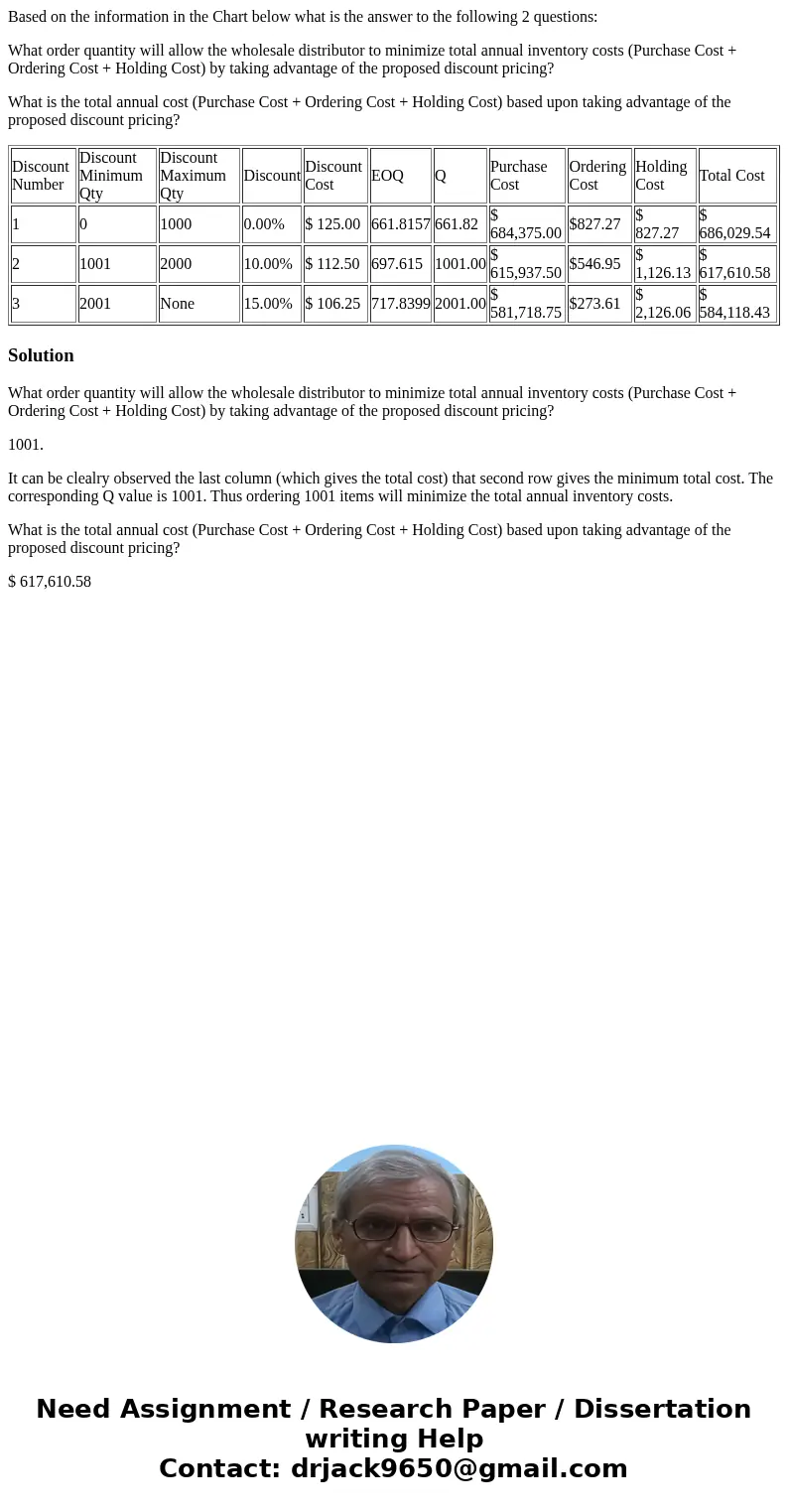Based on the information in the Chart below what is the answ
Based on the information in the Chart below what is the answer to the following 2 questions:
What order quantity will allow the wholesale distributor to minimize total annual inventory costs (Purchase Cost + Ordering Cost + Holding Cost) by taking advantage of the proposed discount pricing?
What is the total annual cost (Purchase Cost + Ordering Cost + Holding Cost) based upon taking advantage of the proposed discount pricing?
| Discount Number | Discount Minimum Qty | Discount Maximum Qty | Discount | Discount Cost | EOQ | Q | Purchase Cost | Ordering Cost | Holding Cost | Total Cost |
| 1 | 0 | 1000 | 0.00% | $ 125.00 | 661.8157 | 661.82 | $ 684,375.00 | $827.27 | $ 827.27 | $ 686,029.54 |
| 2 | 1001 | 2000 | 10.00% | $ 112.50 | 697.615 | 1001.00 | $ 615,937.50 | $546.95 | $ 1,126.13 | $ 617,610.58 |
| 3 | 2001 | None | 15.00% | $ 106.25 | 717.8399 | 2001.00 | $ 581,718.75 | $273.61 | $ 2,126.06 | $ 584,118.43 |
Solution
What order quantity will allow the wholesale distributor to minimize total annual inventory costs (Purchase Cost + Ordering Cost + Holding Cost) by taking advantage of the proposed discount pricing?
1001.
It can be clealry observed the last column (which gives the total cost) that second row gives the minimum total cost. The corresponding Q value is 1001. Thus ordering 1001 items will minimize the total annual inventory costs.
What is the total annual cost (Purchase Cost + Ordering Cost + Holding Cost) based upon taking advantage of the proposed discount pricing?
$ 617,610.58

 Homework Sourse
Homework Sourse